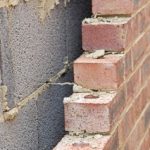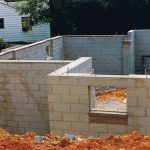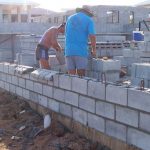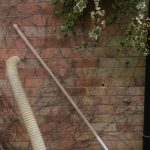List of Cavity Wall Insulation Contractors
Find a cavity wall insulation Contractor in your area.
Important Information.
To begin with it is important to distinguish between the various wall types used in house construction. During the construction process it is easy to see the difference between the various types of walls used for the house construction of our homes.
Cavity wall insulation is a term often used interchangeably to mean two entirely different forms of wall insulation. Firstly, take a look at the three different wall types below.
There are three main types of walls, Cavity wall (double-leaf or double skin), single solid block wall and hollow block walls:
- Cavity Wall (double-leaf or double skin) - this consists of two walls running in parallel with a space in between referred to as the cavity.

- Cavity wall Detail
These wall types may contain either block or brick or a combination of both.
- Single solid block wall type

- Single block brick wall
- Single Hollow Block wall type

-
- Hollow block
-
See also exterior wall insulation, internal wall insulation and roof attic insulation
Why it is so important to understand the wall types
You probably won't have witnessed the original construction of the house you live in. Therefore, unless you have the original drawing details you won't know for certain what wall type was used in the outer wall construction. You only see the outside face of the walls of your dwelling. This could have a rendered or a pebble dashed finished. The insulation company will probably know but will they be able to explain it to you in layman's terms?
Cavity wall insulation technicians or salespersons will have studied the house construction history in your area. From that they should be able to tell you, with a degree of certainty, what your walls are made of. Never the less, they should be willing to show you the inner wall cavities with the aid of an optical fibre camera. You should insist on this measure been taken prior to giving the go ahead for any works.
Although the procedure used for filling the different hollow or cavity wall types are similar the results may be significantly different. For example hollow block walls are harder to fill than double leaf cavity types. The latter will result in a much greater insulation value. Hollow block walls can only be partially infilled.
The type of wall your dwelling is made of will ultimately determine the resulting u-value. It will also dictate the overall percentage of insulation coverage that can be achieved. If you are in any doubt at all as to what type of wall you have then refer the salesperson or insulation technician to this page.
Ask for a straight answer to the following question:
"Is my dwelling constructed of wall type 1, type 2 or type 3 above"?
Also, ask about thermal bridging:
" Will there be much thermal bridges after the work is complete?"
" Which areas of the exterior wall will not be insulated after completion"
Read page 18, referring to thermal bridging, in this useful SEAI Guide.
It is worth noting also that in very wind and rain swept locations in Ireland, such as those on the Atlantic sea coastal areas, cavity wall insulation, especially bonded bead type will be rendered virtually useless if moisture penetrates the cavity. Water acts as a heat conductor thus diminishing the value of the insulation.
Insulation materials used.
The material used for insulating either hollow block or double leaf cavity types can be the same e.g. bonded bead or spray foam insulation but the result, as explained above will be very different. Realistically, it is only ever possible to insulate approximately 75% of a hollow block wall. On the other hand the cavity or double leaf wall can achieve close to 95% insulation coverage.

Cavity Bead Insulation
For a better understanding of Cavity Wall Insulation read the published S.E.A.I. Wall Insulation Guide
Advantages :
- Very low installation costs, especially for double leaf or double skin walls.
- Relatively easy to fill especially for double leaf or double skin walls.
- Big savings on your heating bills.
- Improved BER rating.
- Reduced carbon footprint.
- Improved u-value
Disadvantages :
- It will not be possible to remove all thermal bridges when compared to external wall insulation.
- In the case of concrete cavity block walls, these are sometimes difficult to fill. Also, holes have to made.
- Also in the case of concrete cavity blocks walls, very many drill holes will have to be made.




